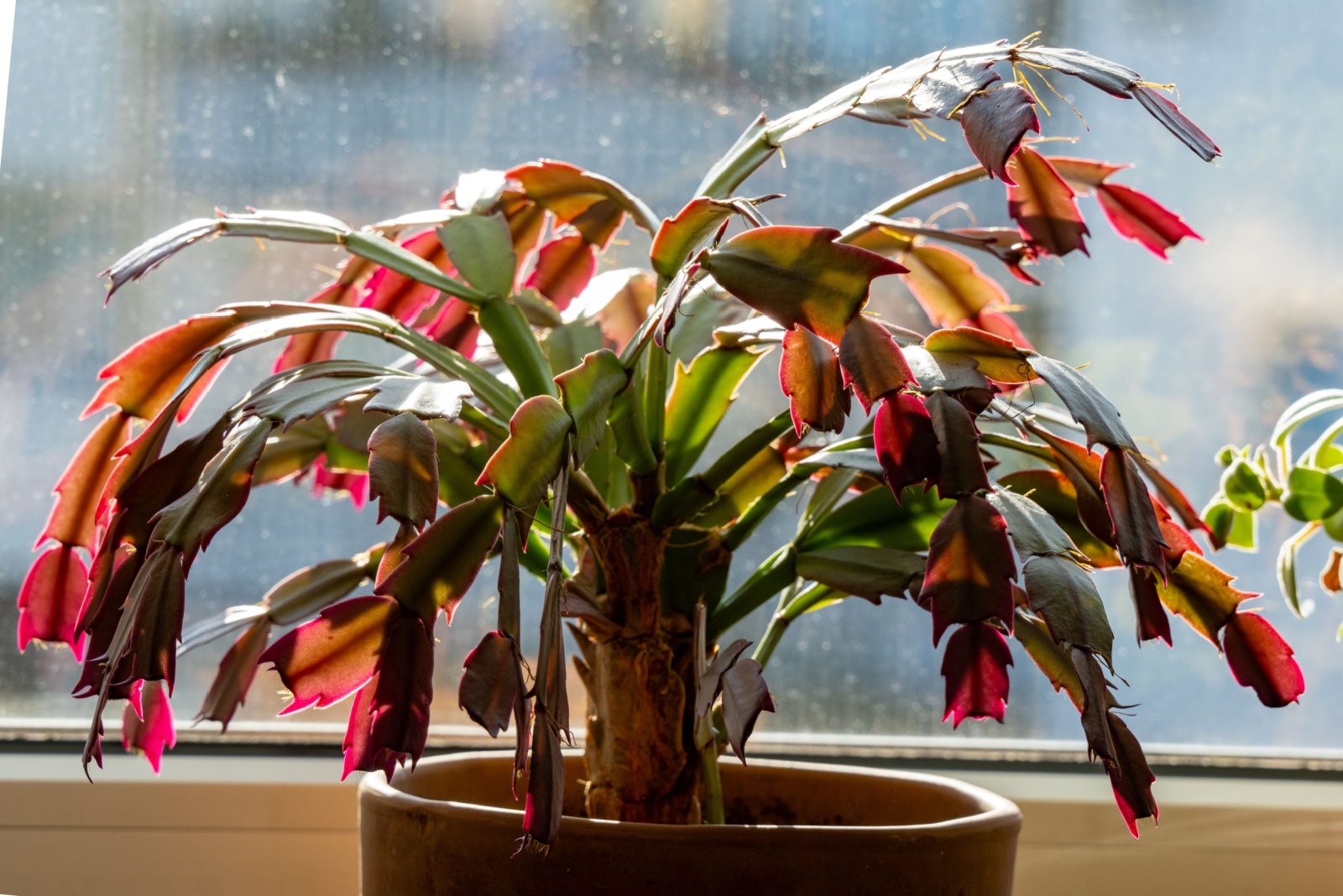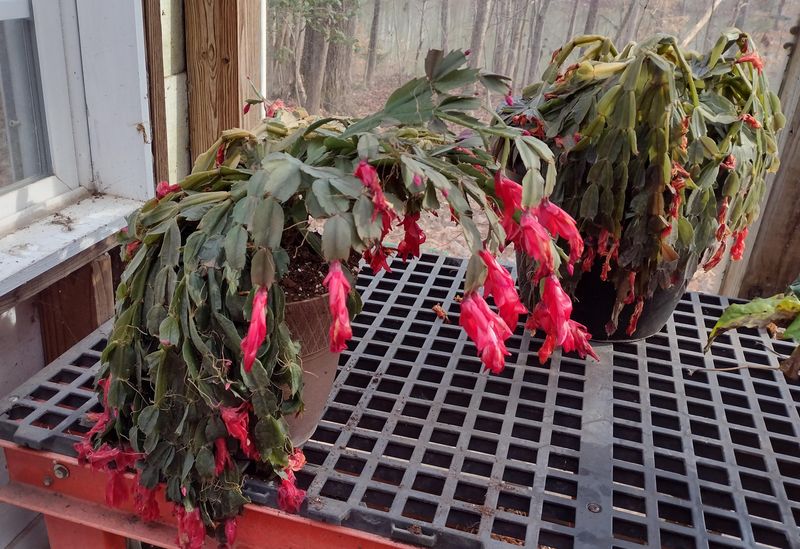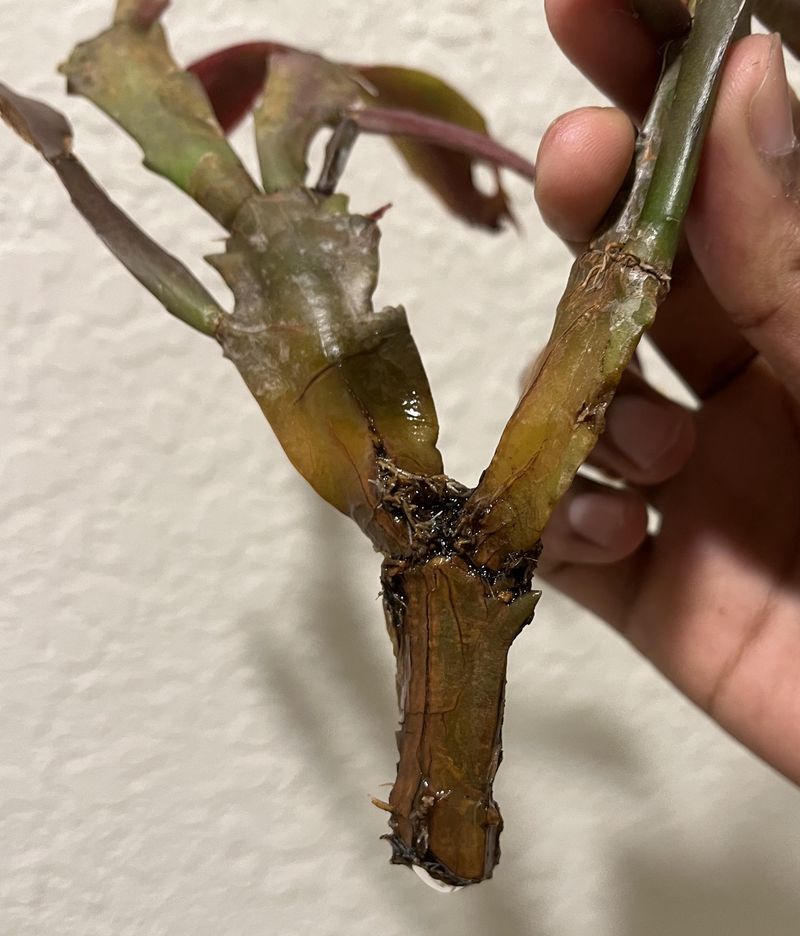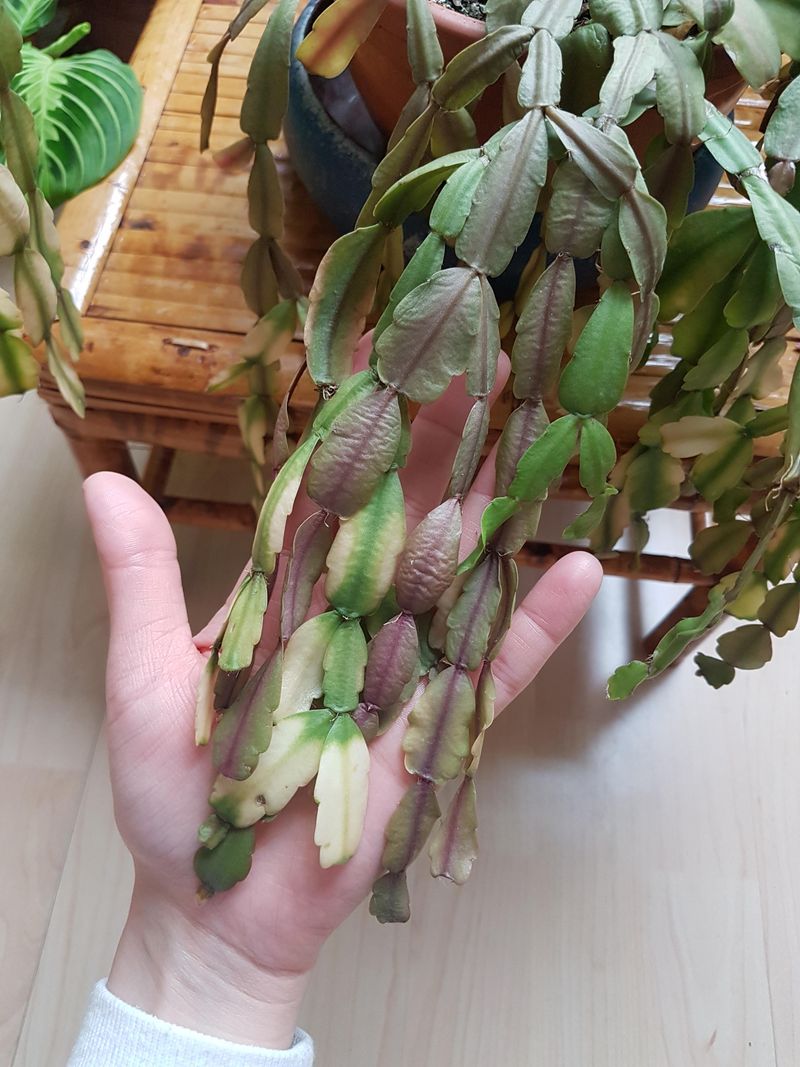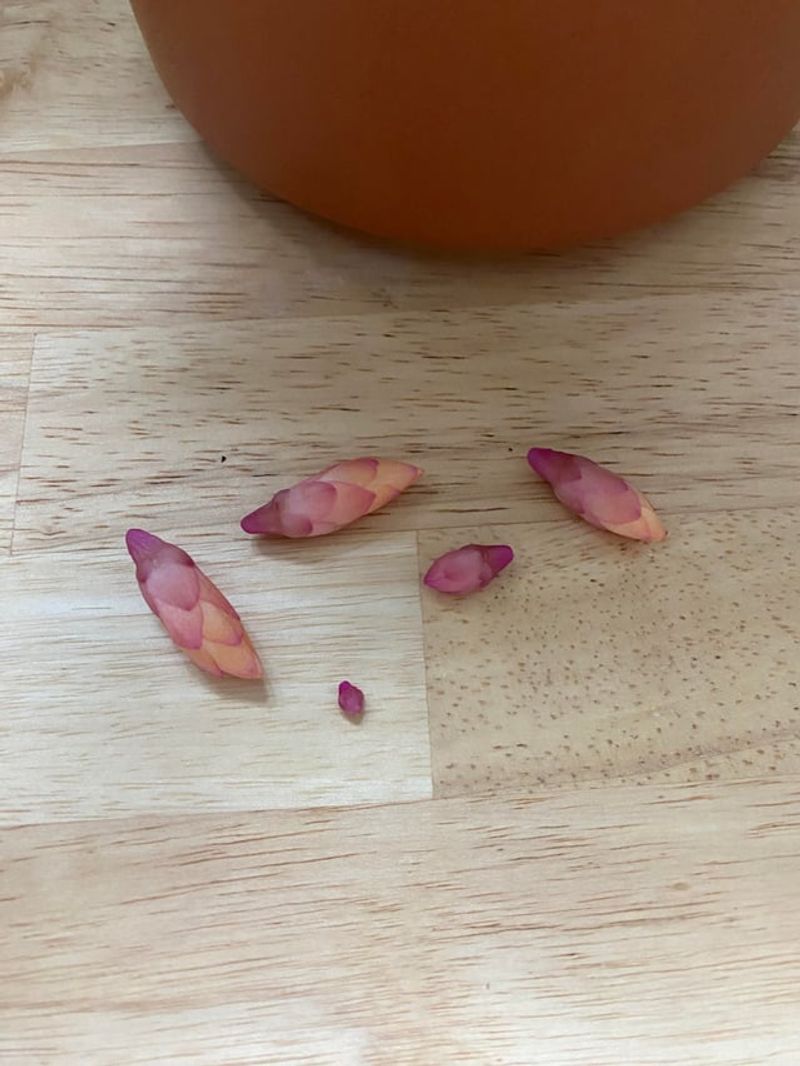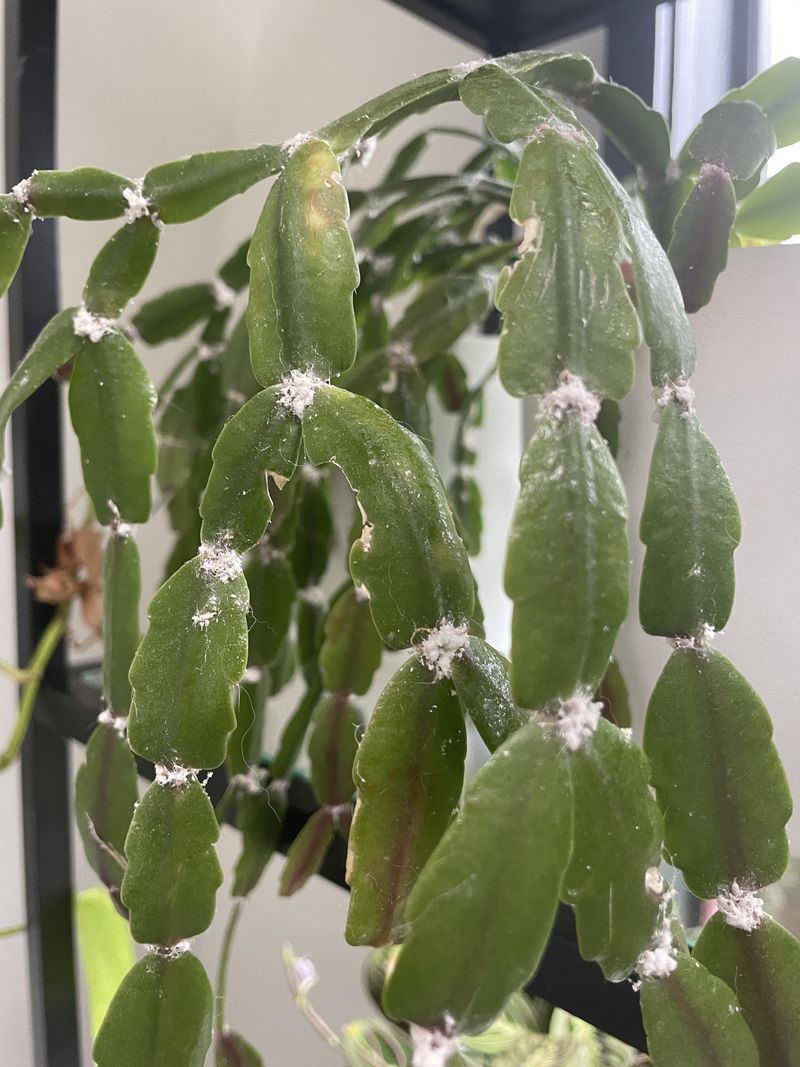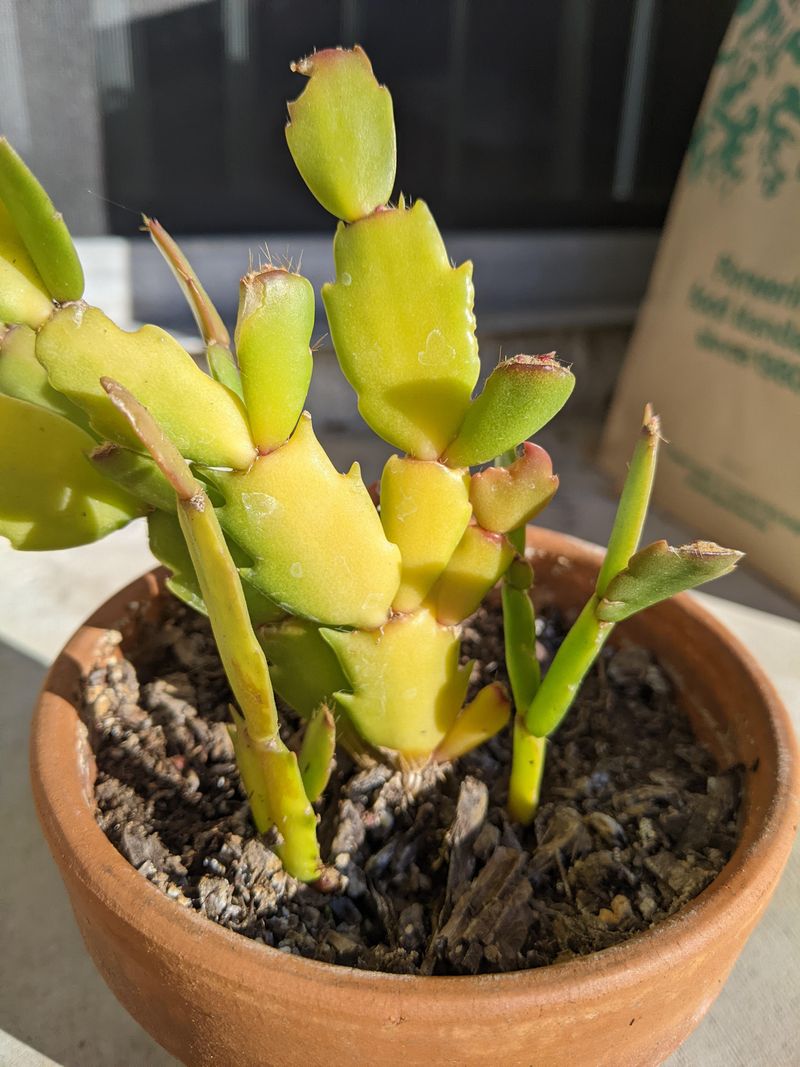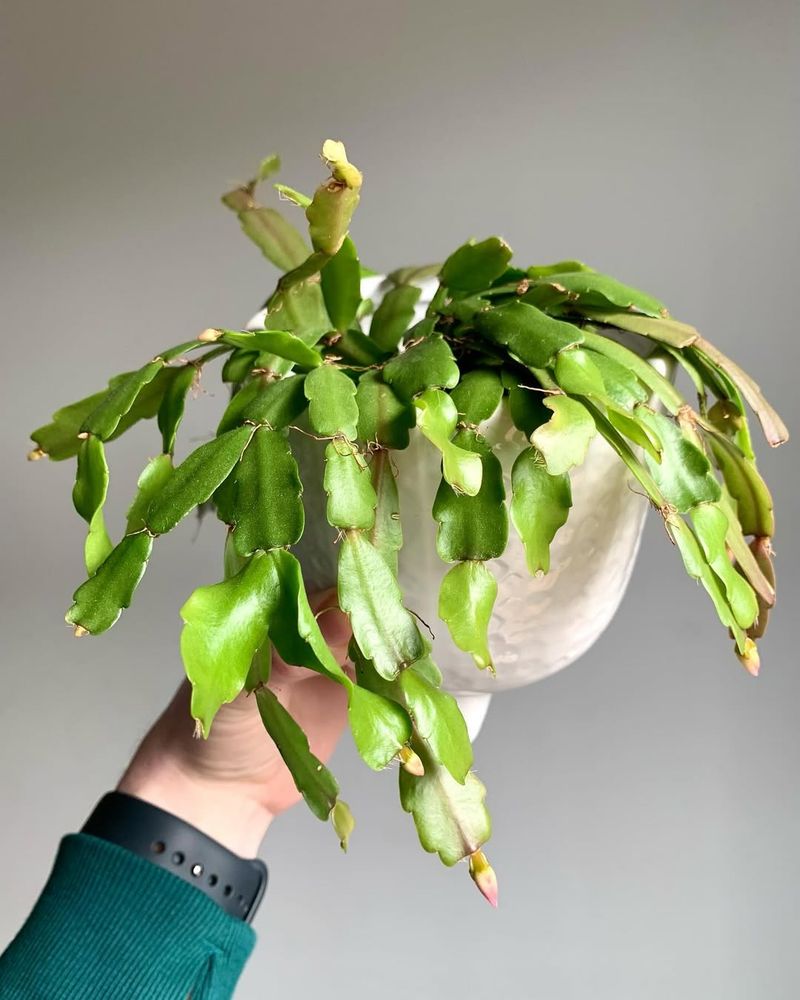A Christmas cactus outside in Maine faces challenges far tougher than anything it meets indoors. Cold snaps roll in fast, damp weather settles deep, and sudden temperature swings put real pressure on this tropical plant.
A few common issues show up quickly, from drooping pads to stalled buds, each one hinting at stress beneath the surface. With the right know-how, these problems stay manageable and your cactus stands a better chance of lighting up the season with bright, festive blooms.
1. Frost Damage Ruins Tender Leaves
Maine winters bring freezing temperatures that can destroy your Christmas cactus overnight. When frost hits the fleshy leaves, they turn mushy and blackened, making recovery nearly impossible.
Your plant needs protection once temperatures drop below 50 degrees Fahrenheit. Bring it indoors or cover it with frost cloth during cold snaps.
Even early fall frosts can sneak up and damage plants left outside too long. Watch weather forecasts carefully and act quickly to save your cactus from freezing harm.
2. Too Much Rain Causes Root Rot
Rainy Maine summers can drown your Christmas cactus in too much moisture. Constant wetness around the roots creates perfect conditions for fungal diseases and root rot to develop.
Good drainage becomes absolutely essential when growing these plants outside. Use pots with drainage holes or plant in raised areas where water flows away easily.
Yellow, wilting leaves often signal that roots are sitting in waterlogged soil. Check the soil regularly and let it dry slightly between waterings to prevent this soggy situation.
3. Sunburn Scorches Plant Segments
Believe it or not, Christmas cacti can get sunburned just like people do at the beach. Direct afternoon sunlight in Maine’s summer can bleach and damage the green leaf segments.
Red or pale patches on the leaves mean your plant is getting too much intense light. Move it to a shadier spot or provide filtered sunlight through a sheer cover.
Morning sun works better than harsh afternoon rays for outdoor growing. Position your cactus where it gets gentle light but stays protected during the hottest parts of the day.
4. Temperature Swings Stress Plants Out
Maine weather changes faster than you can say blizzard, and your Christmas cactus hates those wild temperature swings. Cool nights followed by warm days confuse the plant’s natural rhythms.
Stressed plants may drop their buds or refuse to bloom altogether when temperatures bounce around unpredictably. Consistency matters more than perfect conditions for healthy growth.
Creating a sheltered microclimate helps buffer extreme changes in temperature. Place your cactus near a wall or under an overhang where conditions stay more stable throughout the day and night.
5. Pests Attack Weakened Plants
Spider mites, mealybugs, and aphids love feasting on outdoor Christmas cacti, especially when plants are already stressed from Maine’s tough conditions. Tiny insects hide in leaf joints and multiply quickly.
Look for webbing, sticky residue, or small white cottony spots on your plant’s segments. Early detection makes treatment much easier than waiting until infestations get out of control.
Spray affected plants with insecticidal soap or neem oil to eliminate pests naturally. Repeat treatments every few days until all bugs disappear completely from your precious cactus.
6. Wrong Soil pH Blocks Nutrients
Maine soil tends to be naturally acidic, which sounds perfect until you realize Christmas cacti prefer slightly acidic to neutral conditions. Extreme pH levels lock up essential nutrients the plant desperately needs.
Yellowing leaves with green veins often indicate nutrient deficiencies caused by improper soil chemistry. Test your soil pH and adjust it to between 5.5 and 6.5 for best results.
Adding compost or using specialized cactus potting mix helps maintain proper pH balance. Feed your plant with balanced fertilizer during growing season to keep it nourished and thriving beautifully.
7. Short Growing Season Limits Blooming
Maine’s brief summer gives your Christmas cactus barely enough time to grow strong before cold weather returns. Limited outdoor time means fewer opportunities for the plant to develop flower buds properly.
Christmas cacti need long dark nights in fall to trigger blooming, but Maine’s early frosts force you to bring plants inside prematurely. Indoor conditions may not provide the right light-dark cycle needed.
Start transitioning your plant indoors by late September to avoid frost while still allowing natural darkness exposure. Place it in a cool room with minimal artificial lighting at night.

